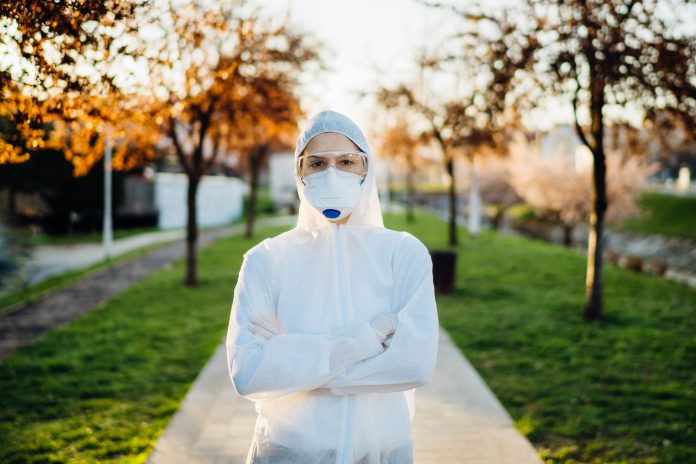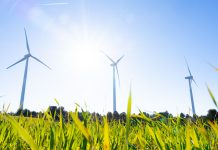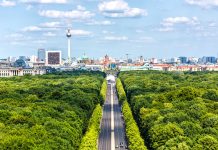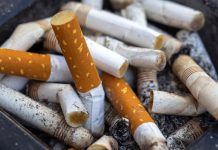Lauren Matelski, Peter Andrew and Pamela J. Lein discuss how environmental pollutants increase individual susceptibility to COVID-19
With more than 300,000 confirmed deaths worldwide and lockdowns in most countries, the COVID-19 pandemic has significantly disrupted life as we know it. Even if scientists are successful in developing an effective vaccine against the causative agent, severe acute respiratory syndrome coronavirus 2 (SARS-CoV-2), a possibility for which there is no guarantee, it will be years before there is sufficient vaccine available to inoculate most of the world’s population. This sobering reality underscores the urgency to identify modifiable factors that influence health outcomes in individuals infected with SARS-CoV-2 or other novel respiratory viruses. Environmental pollution stands out as one such factor.
COVID-19 and air pollution
Emerging research identifies air pollution as a major contributor to COVID-19 mortality. In a study recently published in the journal Environmental Pollution, scientists in Italy reported that the high death rates from COVID-19 in northern Italy correlate with the highest levels of air pollution in Italy. Researchers in the United States concluded that increased levels of PM2.5 (the fine particulate matter suspended in air) are associated with significant increases in the COVID-19 death rate. These data suggest that individuals living in areas with high air pollution face more severe health outcomes and are more likely to die from COVID-19 than those living in areas with clean air.
This relationship is not a surprise to public health researchers and clinicians who have long pointed to air pollution as a major factor influencing susceptibility to and severity of respiratory infections. Following the SARS epidemic of the early 2000s, researchers confirmed that higher levels of air pollution were strongly associated with a higher death rate upon viral infection. This association is not unique to coronavirus – numerous studies have demonstrated that air pollution worsens the adverse health effects caused by “normal” respiratory flu viruses, such as influenza and respiratory syncytial virus.
While gaseous air pollutants, such as ozone and nitrogen oxides, have been correlated with increased numbers of hospitalisations for influenza and pneumonia, the biggest culprit in polluted air is particulate matter (PM). Studies from locations around the world have concluded that increased levels of PM are associated with increased incidence and severity of viral respiratory infections. Importantly, even short-term exposures to high levels of atmospheric pollution or chronic exposures to PM concentrations within regulatory limits have been associated with increased numbers of hospitalisations for viral respiratory infection. Such data call out the insufficiencies of current environmental regulations and suggest that more stringent measures are necessary to protect public health.
What about other environmental pollutants?
While less frequently investigated, environmental pollutants other than air pollution have also been tied to elevated risk of viral infections of the respiratory tract. In particular, pre-and perinatal exposures to a number of persistent organic pollutants, including polychlorinated biphenyls (PCBs) and per-/polyfluoroalkyl substances (PFAS), are associated with reduced immune response after vaccination and increased susceptibility to respiratory infection during childhood. Occupational exposures to various pesticides, including organophosphorus pesticides (OPs), are also linked with immunosuppression and increased risk of viral respiratory diseases.
Environmental pollutants are thought to influence an individual’s response to viral infection in part by compromising host defence. Anatomical barriers represent the first line of defence against viruses, and evidence from human and animal models suggests that pollutants adversely affect cells performing this function. Exposure to PM and ozone induces oxidative stress in respiratory epithelial cells, leading to damage, increased permeability, and cell death. Pollutant exposures can change expression of cell surface receptors to facilitate viral adhesion and subsequent entry into cells.
Many environmental contaminants can also alter the composition of the commensal microbiome (bacteria, viruses, fungi, and protozoa) that colonises epithelial surfaces of the upper respiratory tract. The lung microbiome contributes to mounting an effective local immune response to viral infections in the lung. PM in polluted air interferes with this process by decreasing native microflora species and increasing pathogenic bacteria. Air pollution is also linked to differential cytokine responses and altered expression and function of surfactant proteins, important immune signalling and chemical defence molecules, respectively, in the lungs.
Viral threats in the tissue
Once a viral threat breaches barrier tissue, host defence relies on the immune system to overcome infection. Innate immune cells involved early in this response include macrophages, phagocytic cells important for defence against intracellular pathogens such as viruses. Exposure to PM, ozone, or PCBs compromises macrophage response to various infectious agents. Natural killer (NK) cells eliminate virally-infected cells, and their activity in mice and humans is reduced by exposure to air pollution and PFAS. Conversely, pollutants can improperly amplify the immune response, increasing the possibility of a “cytokine storm”, a clinical phenomenon linked to poor health outcomes in COVID-19.
Environmental pollutants can also influence the effects of respiratory viral infection indirectly by increasing risk for comorbid conditions that exacerbate viral disease and worsen prognosis. For example, patients with pre-existing conditions such as lung disease (including asthma), obesity, diabetes, cardiovascular disease, and liver disease are at increased risk for severe illness from COVID-19. Each of these conditions is associated with exposure to various environmental pollutants in human epidemiology studies and animal models, and air pollution in particular is linked to all of them. Exposure to air pollution is also hypothesised to induce a state of chronic inflammation, which could plausibly hinder or exacerbate the immune response to pathogens. Mortality from COVID-19 usually results from a dysregulated immune response that increases risk of secondary infections, induces collateral lung damage, and compromises organ function.
How can this be changed?
Environmental pollution is a significant risk factor for respiratory viral infections, but, importantly, environmental pollution is modifiable. This has been dramatically demonstrated by the global lockdown during the COVID-19 pandemic, which has noticeably reduced air pollution worldwide. To minimise the mortality and morbidity associated with COVID-19 and the inevitable future viral epidemics and pandemics, it will be critically important to not only enforce but also strengthen existing environmental pollution regulations, and for humans globally to embrace lifestyle and policy changes that mitigate environmental pollution to the greatest extent possible. Even in the absence of viral threats, such changes will save more lives globally than those lost to COVID-19.











